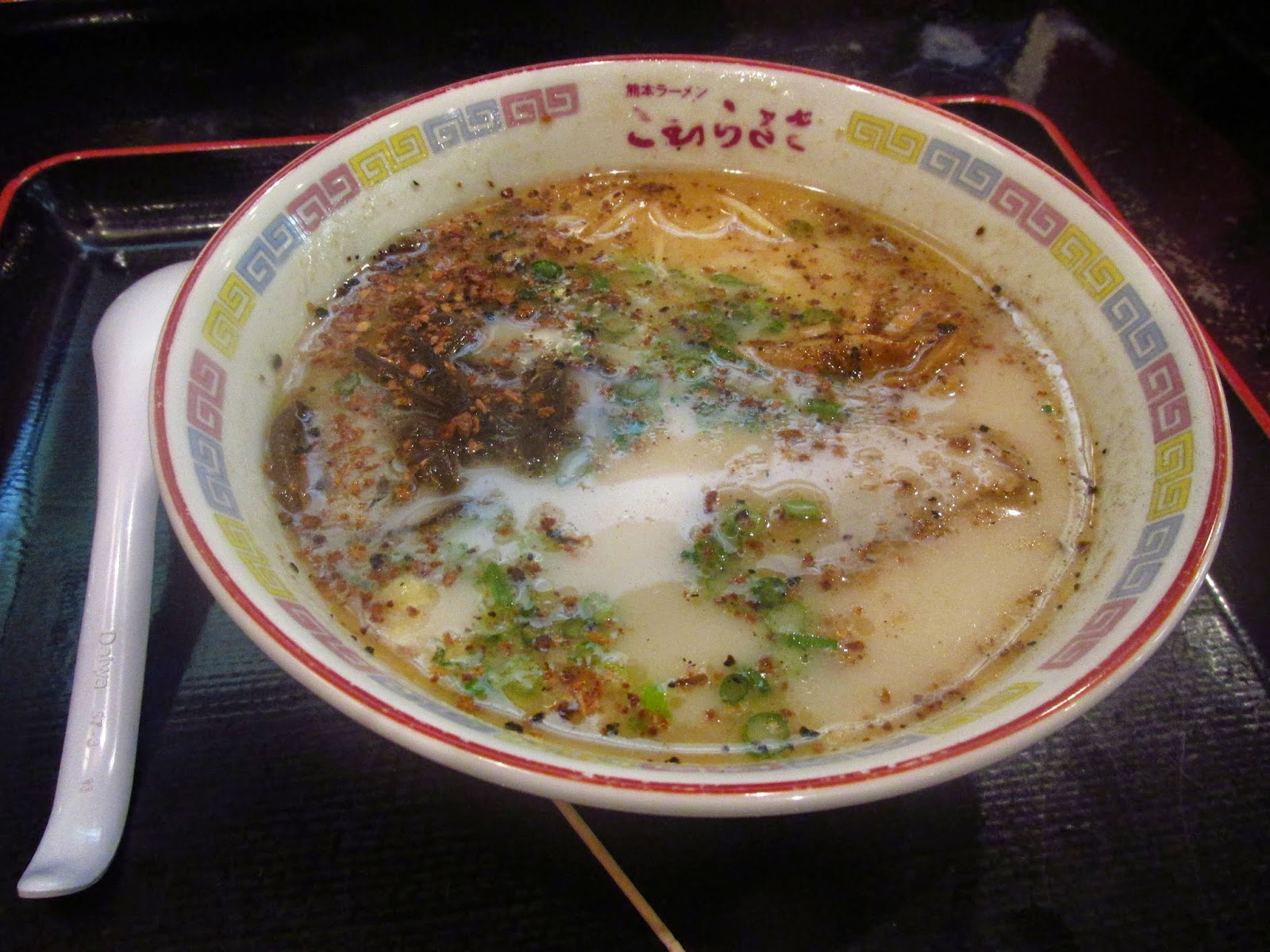"Only 3 to 4% of Japanese people polled said that they don't like ramen," Ty told me between thick slurps. "Foreigners love ramen too. It's easy to take foreigners to eat ramen." Truer words were never spoken.
In Japan, ex-pats and locals alike all have their favorite type of ramen. There's no shortage of different bases for the soup, thicknesses or types of noodles, or variations of additional toppings - but unfortunately, it's hard to experience them without a significant amount of travel. And although I have no doubt it's possible to find different types of ramen from across Japan within Tokyo, that would take some research too, no doubt.
And so, Ty and I, lovers of ramen both, found ourselves in the one place where 9 different types of ramen met under one roof: the Ramen Museum of Yokohama (not to be mistaken for the Cup-Noodle Museum of Yokohama.)
For the cheap admission price of 300¥, the rather plain-looking building is hardly eye-catching at first, and even upon entering. But the bulk of the museum is underground. Go down one floor, and suddenly, you find yourself transported to the Japan of the late 1950's, during the years when ramen culture was at its peak and exploding across Japan. And really, the decorum is great - old movie posters adorn walls, 50's Japanese music fill the vast hall, and of course, ramen restaurants to be seen in every corner of the room.
And really, "museum" it may be called, but the Ramen Museum hardly offers you any information. "You want to learn something?" it seems to say, "then eat, damn it." And so we did. Each restaurant within the ramen museum offers mini-portions, which are about half the size of a standard portion of ramen, for a rather affordable 570¥ each, making the Ramen Museum the ideal place to sample different kinds. Now, of course, trying each of the nine mini-portions would have equated to eating around 4-5 bowls of ramen, which one of is adequate for a meal. While I'm sure it's not only possible but has been done before, as adventurous as we were, we weren't about to replace the blood in our veins with broth, so a choosing was in order. In the end, we opted to choose 4 different types of ramen, each with a different base for the soup, from 4 different shops within the museum.
The first, Zweite Ramen, is actually originally a ramen shop from Germany. That itself was a conundrum and drew us in. Apparently, the flour used for the noodles here are traditionally for pastas and pizzas usually found in Europe. Zweite Ramen is a restaurant that actually, if the information at hand was to be believed, has quite a good reputation within Germany. The noodles and the soup were both rather thick, and the sauce was a pork bone and soy sauce combination.
Our second stop was Ryu Shanghai, with its ultra thick noodles, reputed to be folded 32 times. Their miso based soup is given extra flavor by a generous topping of spicy red miso, sitting right atop the noodles as the dish is served to you. I didn't find the whole thing particularly spicy, but perhaps that's for the best, as the spice doesn't remove from the richness of the soup.
The third was Nidaime Genkotsuya, which served a very satisfying salt and soy based soup with its straight noodles, which were neither thin nor thick, but quite flat - a first for me when it comes to ramen. The more-than-adequate toppings of pork and kelp is what made this one taste great to me.
Our last stop was Komurasaki, a shop originally from the western prefecture of Kumamoto, which specialized in pork bone soup. Contrary to the nearby and very-famous hakata ramen, which also uses a pork bone based soup, the soup at Komurasaki was rather light, though both types of ramen use thin noodles. Komurasaki's special flourish was the roasted garlic chips, which gave the dish a really nice smell.
All the different types of ramen aside, the museum itself does go an extra step in conveying the mood of 50's Japan, by having occasional kamishibai shows, which are charismatically narrated story-panels played from within a box-like contraption. The story teller flips the panels manually while telling the story, displaying the pictures from a window in the box. You can kind of think of it as a proto-television. Plus, it's worth having a look around to see the old-fashioned candy shops and the like, which are also decorated and run as they were back in the day.
The Ramen museum was a culinary blast, and I say that as a person who really isn't much of a foodie. Go for the ramen, and stay for the ambiance.







No comments:
Post a Comment